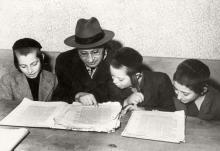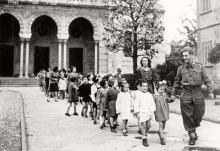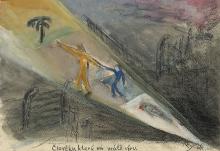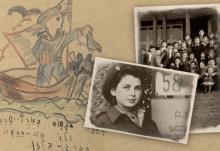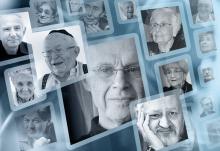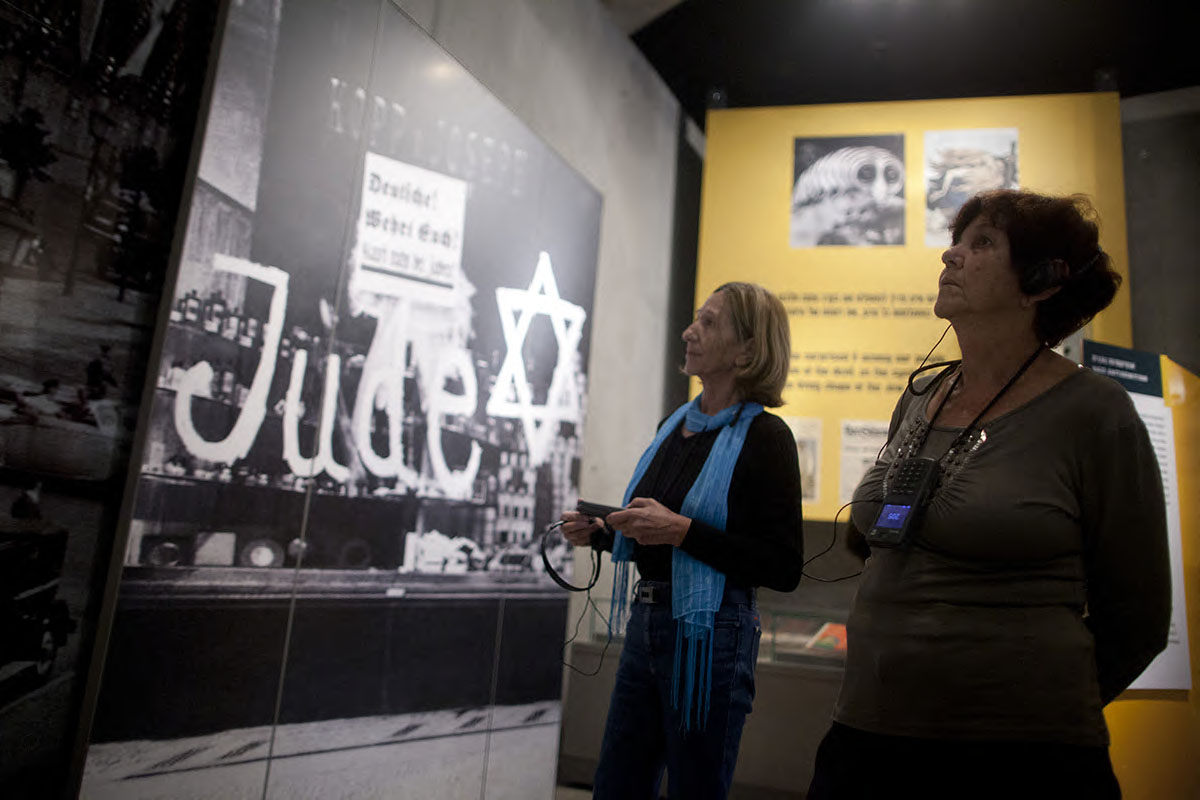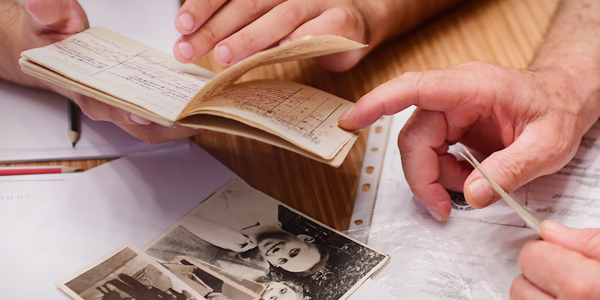Read More...








Yad Vashem Photo Archives 6093

The words "The sounds of joy and gladness, the voice of the groom and the voice of the bride" (Jeremiah 33:11) are embroidered on the canopy.
Yad Vashem Artifacts Collection. Loaned by the Joint Distribution Committee.
The wedding canopy was donated to the JDC by Jane and Stuart Weitzman, USA

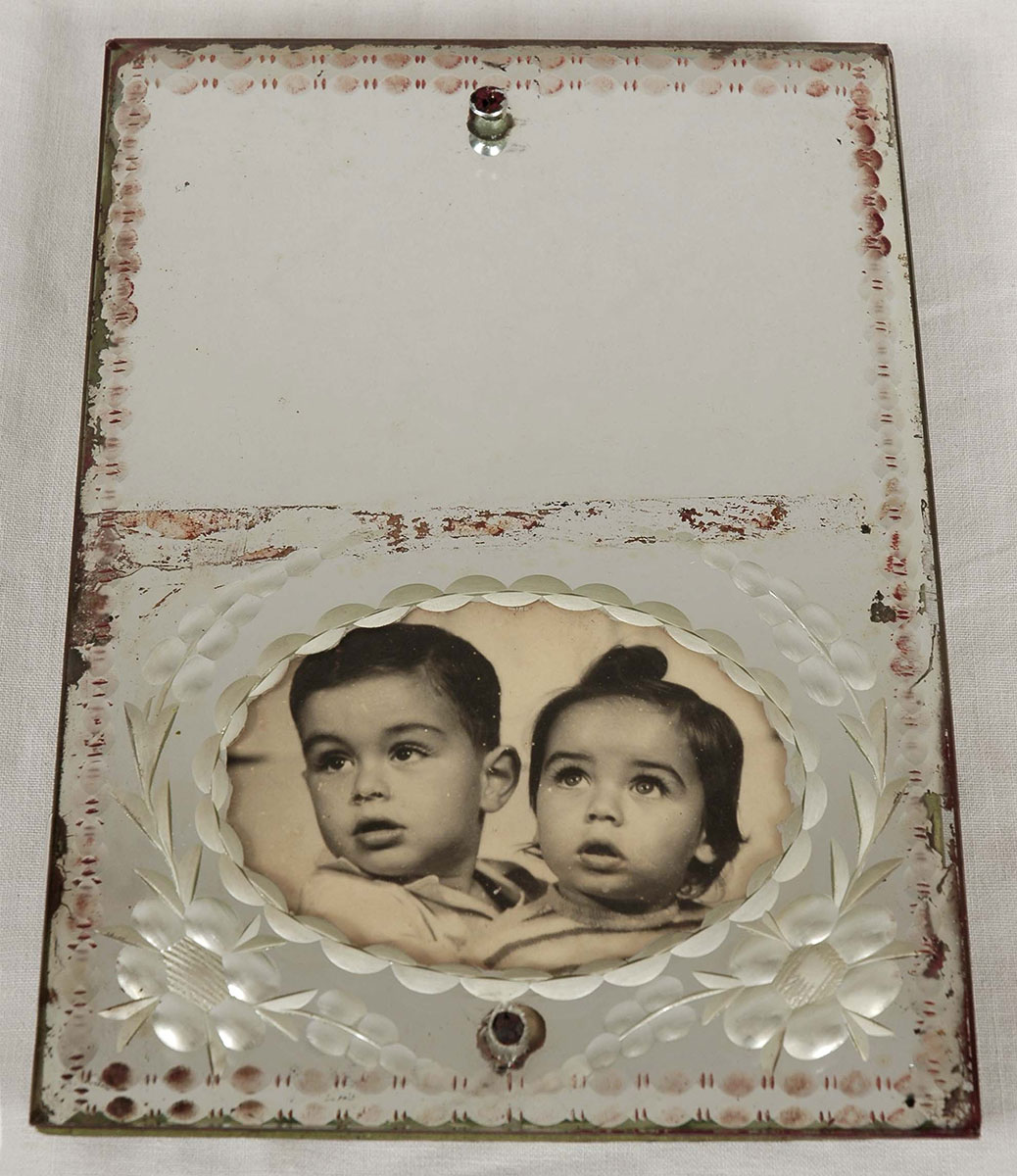
Paul, the sole survivor, returned home where he found the mirror with his late wife’s relatives.
Yad Vashem Artifacts Collection
Donated by Katy Sivan, Holon, Israel


Judith Shapiro, born in 1932, was deported from the Vilna ghetto to forced labor in Riga. There, she was put to work interweaving copper wires for the production of field telephones. After the liberation, and while in the Zeilsheim DP camp in Germany, she created works of art from copper wires.
Yad Vashem Artifacts Collection
Donated by Judith (Shapiro) Goldstein, U.S.A


Writing Set, Cyprus, 1947. Handicrafts and mementoes made by Holocaust survivors during their internment in detention camps in Cyprus, where they had been sent after attempting to reach Eretz IsraelThe set has a container for ink on each side, and a ridge for setting down the fountain pen at the front. It is designed in the form of the iron bridge that connected two of the detention camps in Cyprus that were separated by a road. The bridge was constructed after pressure was put on the British to make it easier to cross from one camp to the other.Artist – unknown
Yad Vashem Artifacts Collection


Yehoshua Leibner, Deputy Director of the Joint Distribution Committee, received the menorah as a token of appreciation for his efforts. The menorah and other objects were made by Holocaust survivors during their internment in detention camps in Cyprus, where they had been sent after attempting to reach Eretz Israel. Most of these objects were made from limestone, which was readily available on site.
Yad Vashem Artifacts Collection
Donated by Ehud Leibner, Kibbutz Ein Hashofet, Israel


Gift of the Artist
Collection of the Yad Vashem Art Museum

The two million Jews who survived in the Soviet Union and the hundreds of thousands who somehow managed to survive the camps or in hiding desperately sought out surviving relatives. Usually their attempts were in vain. Many Jews who emerged from camps, forests and hideouts, or who returned from the Soviet Union under the repatriation agreement, received an enraged and hostile welcome. Many of the locals feared that the Jews would demand restitution of the property they had stolen. Antisemitic gangs murdered approximately 1,500 Jewish survivors in Poland alone, in the first months after the liberation.
As a result of their hostile reception, survivors turned to the west. Many settled provisionally near the Polish-German border and established community institutions with an eye toward new lives. Hospitals to treat the ill and exhausted survivors, orphanages, schools and training farms were set up. After a period of convalescence, survivors moved on to Western and Southern Europe en route to the Italian coast. The survivors demanded free immigration, particularly to Eretz Israel. The American Jewish Joint Distribution Committee operated among the displaced persons (DPs), helped with food and clothing, underwrote educational endeavors, and provided money for organized underground immigration to Eretz Israel, known as Aliyah Bet. About one-third of the 300,000 Jewish DPs immigrated to the United States, Canada, Australia and the Latin American countries.
At the war’s end, the Allies gathered hundreds of thousands of survivors in DP camps in Germany, Austria and Italy. Over one year, tens of thousands of additional refugees, mostly repatriates returning from the Soviet Union, streamed westwards towards the DP camps with the assistance of the Beriha. 250,000 people were living in these camps by the end of 1946. The survivors managed to organize a vibrant Jewish life, which incorporated educational and cultural activities, religious worship and political activism.
After the war, the Jewish people fought the British White Paper policy that severely limited immigration to Palestine. Between 1945-1948, some 70,000 Jewish survivors made their way to Palestine, often on vessels that were unseaworthy. In response, the British began deporting these illegal immigrants to Cyprus, where they were held in detention camps. Some 52,000 illegal immigrants were deported to the detention camps in Cyprus, once again finding themselves being held behind barbed wire fences. The Joint Distribution Committee and emissaries from the Yishuv (Jewish community in Eretz Israel) mobilized to help them and maintain their link with Palestine.
On November 29, 1947, the United Nations resolved to terminate the British Mandate for Palestine and to divide the country into two states: one Jewish and one Arab. The following day, fighting broke out and survivors played a major role in the battles and in the War of Independence that began the following May. About half of Israel’s fighting force after the establishment of the Israel Defense Forces were Holocaust survivors, and approximately one-third of all those who fell in battle were members of She’erit Hapleita.







